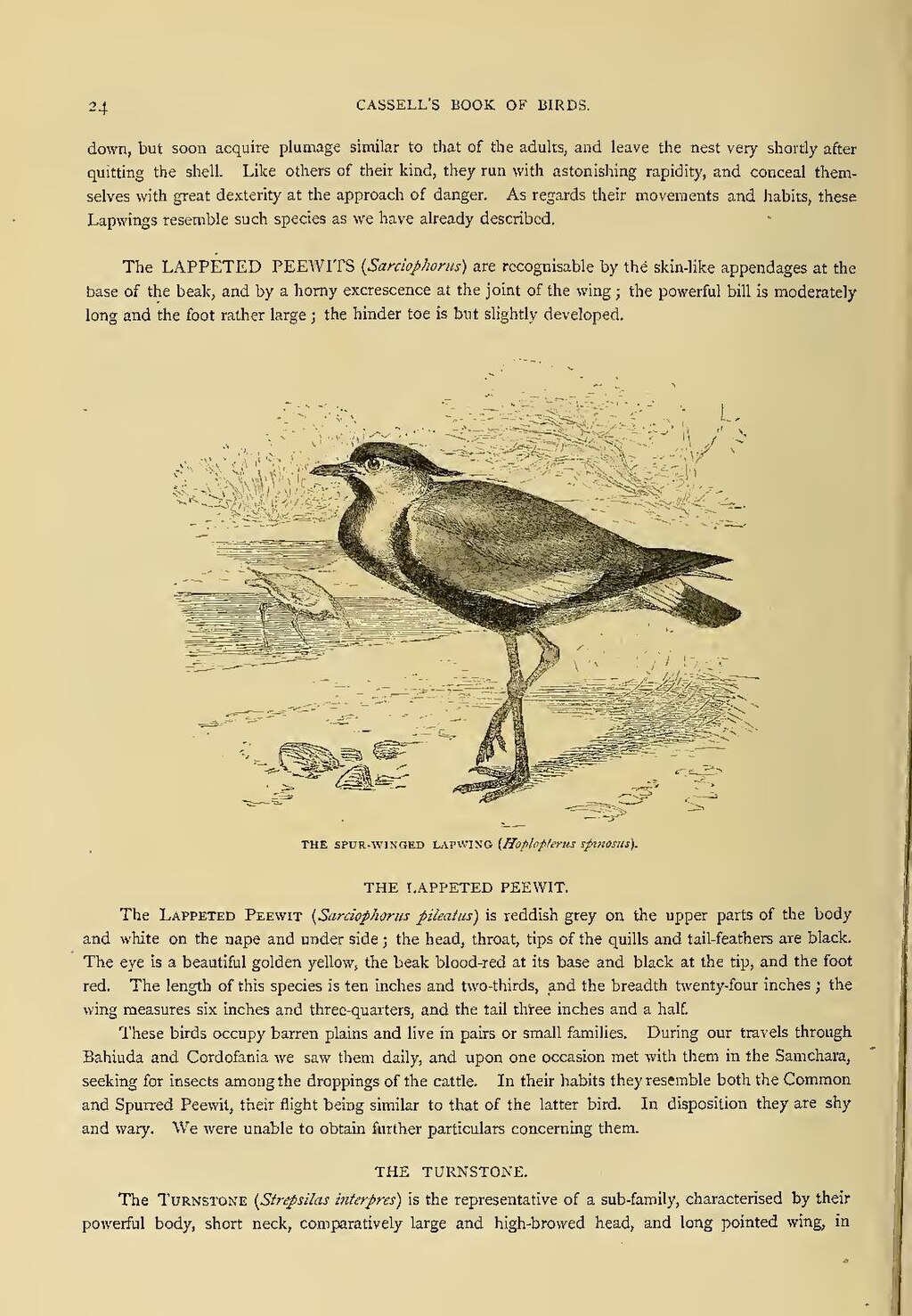down, but soon acquire plumage similar to that of the adults, and leave the nest very shortly after quitting the shell. Like others of their kind, they run with astonishing rapidity, and conceal themselves with great dexterity at the approach of danger. As regards their movements and habits, these Lapwings resemble such species as we have already described.
The LAPPETED PEEWITS (Sarciophorus) are recognisable by the skin-like appendages at the base of the beak, and by a horny excrescence at the joint of the wing; the powerful bill is moderately long and the foot rather large; the hinder toe is but slightly developed.
An image should appear at this position in the text. To use the entire page scan as a placeholder, edit this page and replace "{{missing image}}" with "{{raw image|Cassell's book of birds (IA cassellsbookofbi04breh).pdf/40}}". Otherwise, if you are able to provide the image then please do so. For guidance, see Wikisource:Image guidelines and Help:Adding images. |
THE SPUR-WINGED LAPWING (Hoplopterus spinosus).
THE LAPPETED PEEWIT.
The Lappeted Peewit (Sarciophorus pileatus) is reddish grey on the upper parts of the body and white on the nape and under side; the head, throat, tips of the quills and tail-feathers are black. The eye is a beautiful golden yellow, the beak blood-red at its base and black at the tip, and the foot red. The length of this species is ten inches and two-thirds, and the breadth twenty-four inches; the wing measures six inches and three-quarters, and the tail three inches and a half.
These birds occupy barren plains and live in pairs or small families. During our travels through Bahiuda and Cordofania we saw them daily, and upon one occasion met with them in the Samchara, seeking for insects among the droppings of the cattle. In their habits they resemble both the Common and Spurred Peewit, their flight being similar to that of the latter bird. In disposition they are shy and wary. We were unable to obtain further particulars concerning them.
THE TURNSTONE.
The Turnstone (Strepsilas interpres) is the representative of a sub-family, characterised by their powerful body, short neck, comparatively large and high-browed head, and long pointed wing, in
